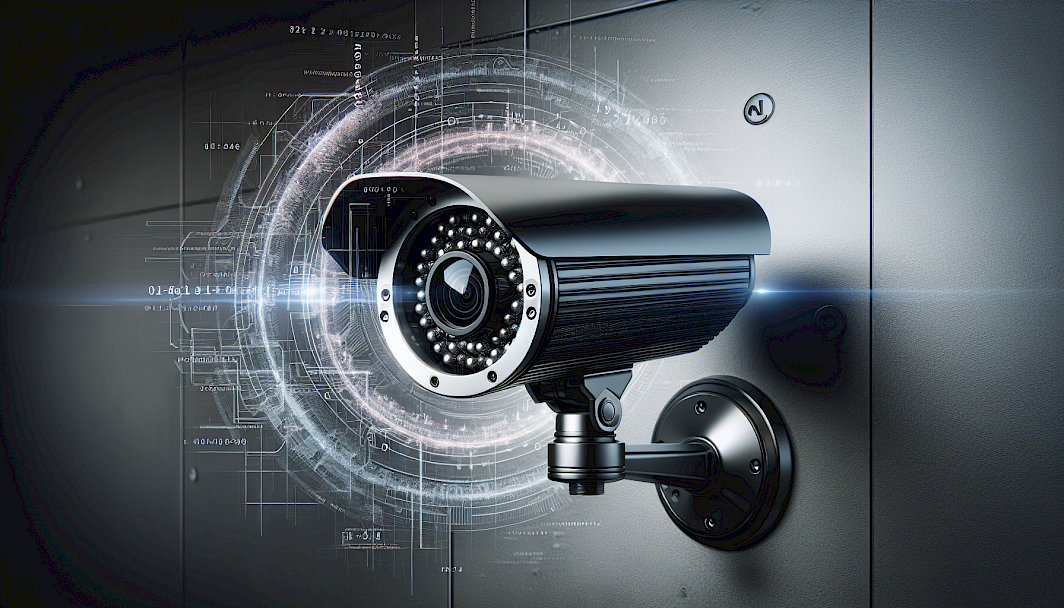The Video Surveillance as a Service (VSaaS) market is on the brink of a major breakthrough, with projections indicating a staggering $90 billion valuation by 2025. This rapid growth highlights the increasing demand for edge-based video surveillance solutions across various industries. As businesses and organizations seek more efficient and cost-effective ways to enhance security, VSaaS offers a compelling alternative to traditional on-premises systems.
The rise of VSaaS brings with it a host of advanced features that are reshaping the security landscape. These include cutting-edge video analytics, artificial intelligence for anomaly detection, and improved scalability to meet diverse needs. Data privacy concerns are also being addressed through robust security measures. What are the key drivers behind this market expansion? Let's examine how different sectors are adopting VSaaS, and discuss the impact of innovative platforms like VAISense, which makes it easier to add AI-based video detection to existing camera security setups.
Key Drivers of VSaaS Market Growth

The rapid expansion of the VSaaS market has an influence on various factors that are reshaping the video surveillance landscape. These drivers are propelling the industry towards unprecedented growth and innovation.
Edge Adoption
The increasing adoption of cloud-edge technology across industries has a significant impact on the VSaaS market. Storage, processing, bandwidth, and management of video surveillance data are all factors that businesses have to consider. VSaaS is traditionally interpreted as sending your video directly to the cloud for processing, but can be an expensive and slow process. Edge based VSaaS is a new attractive option for organizations of all sizes because it offers economic subscription-based advantages with the reliability and privacy of on-prem hardware.
Cost-Effectiveness
One of the primary benefits driving VSaaS growth is its cost-effectiveness. By adopting a subscription-based model, businesses can transition from capital-intensive expenditures to more manageable operational expenses. This approach allows companies to pay for the services they use, optimizing their cost structure and reducing the total cost of ownership. Additionally, edge-based VSaaS eliminates the need for businesses to upgrade their own video surveillance infrastructure, resulting in significant long-term savings.
Scalability
The scalability offered by VSaaS has a major impact on its market growth. Traditional video surveillance systems can be challenging and costly to scale, particularly for businesses with multiple locations. VSaaS with VAISense Cloud provides a flexible solution that allows organizations to easily add or remove servers and cameras as needed, making it adaptable to changing business requirements. This scalability extends to storage capacity as well, with cloud-based solutions offering virtually unlimited storage options that can be adjusted dynamically based on demand.
The VAISense platform exemplifies how VSaaS brings an easy ability to add AI-based video detection to existing camera security installations. This integration of advanced features, such as artificial intelligence for anomaly detection and video analytics, further enhances the value proposition of VSaaS. As a result, it has become an indispensable tool for improving operational efficiency, enhancing security, and gaining valuable insights from video data across various industries.
VSaaS Market Segmentation

The Video Surveillance as a Service (VSaaS) market has evolved to offer diverse solutions tailored to meet the specific needs of various industries and organizations. This segmentation allows businesses to choose the most suitable option based on their requirements, infrastructure, and budget constraints.
Hosted VSaaS
Hosted VSaaS has gained significant traction, accounting for over 45% of the global revenue in 2022. This model offers a comprehensive cloud-based solution where video data is stored off-site, typically in the provider's data center or third-party cloud services like Amazon or Microsoft Azure. Hosted VSaaS has become increasingly popular due to advances in cloud technology and the growing demand for remote monitoring solutions. However, the major issue with hosted VSaaS is the bandwidth needs, latency of detection, and associated costs with speed and storage.
Managed VSaaS
Managed VSaaS offers a different approach, where video data is stored on-site at the physical location of the security cameras. This model allows customers to leverage existing infrastructure while benefiting from remote management and viewing capabilities. Managed VSaaS is particularly appealing to organizations that prefer to maintain control over their data storage while still enjoying the flexibility and scalability of cloud-based management tools. An issue with this strategy is that businesses will need to maintain a growing number of edge devices on premises, which can get excruciating to do for even the most talented of IT staff. Another issue is the latency and complexity in notifications to monitoring services, who may lose precious time in responding to false-positives or false-negatives.
Hybrid VSaaS
The hybrid VSaaS segment has emerged as a rapidly growing solution, combining the advantages of both hosted and managed models. This approach allows businesses to store video data both on-premises and in the cloud, offering greater flexibility and redundancy. Hybrid solutions have gained popularity among organizations seeking to balance local storage capabilities with the benefits of cloud-based services. This model has an impact on businesses that want to leverage existing infrastructure while gradually transitioning to cloud-based solutions.
The VAISense platform exemplifies the flexibility of hybrid VSaaS, allowing easy integration of AI-based video detection into existing camera security installations. This adaptability has a significant impact on the market's growth, as it enables organizations to enhance their surveillance capabilities without completely overhauling their current systems.
Industry Verticals Adopting VSaaS

The adoption of Video Surveillance as a Service (VSaaS) has gained significant traction across various industry verticals, with each sector recognizing its unique benefits and applications.
Commercial
The commercial segment has emerged as a frontrunner in VSaaS adoption, accounting for over 37% of global revenue in 2022. This growth has an impact on several factors, including cost-effectiveness, scalability, and remote accessibility. Businesses in the retail, hospitality, and banking sectors have embraced VSaaS to enhance security measures, analyze customer behavior, and streamline operations. The ability to easily scale surveillance systems up or down based on changing needs has made VSaaS particularly attractive to commercial enterprises. Additionally, the remote access feature allows business owners and security personnel to monitor premises from anywhere, improving overall security and awareness.
Residential
The residential sector has also witnessed a surge in VSaaS adoption. Homeowners are increasingly turning to cloud-based video surveillance solutions to protect their properties and enhance home security. The integration of VSaaS with smart home devices has played a crucial role in this growth. These systems offer features such as real-time alerts, remote monitoring, and video analytics, providing homeowners with greater peace of mind and control over their security measures.
Industrial
The industrial segment is poised for significant growth in the VSaaS market. Manufacturing facilities, construction sites, and warehouses are leveraging VSaaS to monitor operations, prevent theft, and ensure compliance with safety regulations. The VAISense platform exemplifies how VSaaS brings an easy ability to add AI-based video detection to existing camera security installations in industrial settings. This integration of advanced features, such as artificial intelligence for anomaly detection and video analytics, further enhances the value proposition of VSaaS in industrial applications.
The adoption of VSaaS across these verticals has an impact on the overall market growth, driving innovation and expanding the range of available solutions. As businesses and individuals continue to recognize the benefits of cloud-based video surveillance, the VSaaS market is expected to experience sustained growth across all sectors.
Conclusion
VSaaS is a valuable option to growing and large businesses alike. Quick adoption, lower costs, and better analytics that will result in business growth and safety. VAISense is leading the charge in giving VSaaS to video AI on edge devices with ways to reduce costs that are normally associated with visual AI based security systems. As growth continues to build for these services, look to VAISense to continually develop new and improved AI models to solve more problems.

Get Started with Edge AI Today
Our experts are ready to help you get started with an edge AI solution that best fits your needs and will help you leap ahead of your competition. Let's talk!
Get the Latest AI Insights
Subscribe to the VAISense Newsletter.
